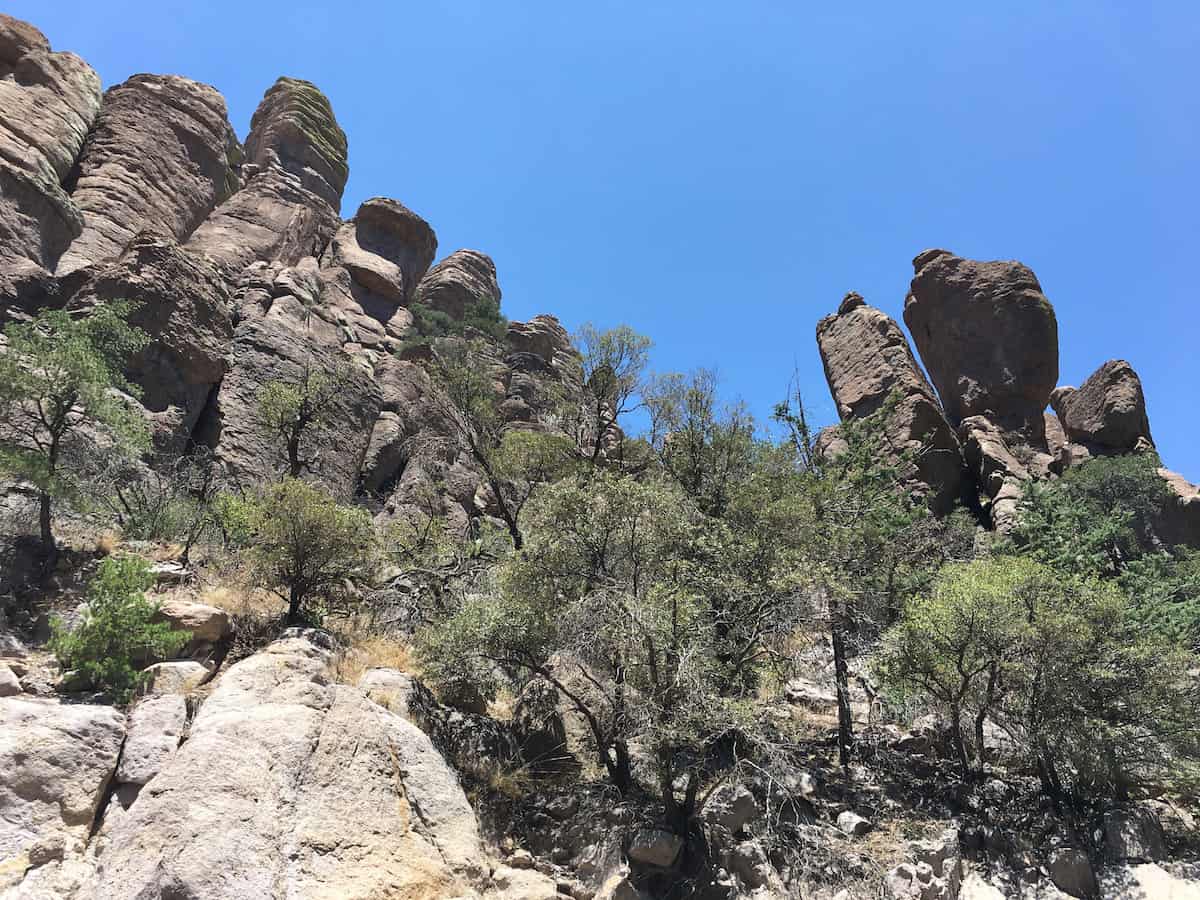
Located in Southern Arizona close to the New Mexican border, Chiricahua National Monument offers a mountaintop oasis in the middle of desert southwest. Known as a sky island, this area towers over the nearby grassland and offers cooler temperatures throughout the year. A quick detour from Interstate 10, Chiricahua National Monument makes an ideal road trip stop with scenic drives, short hikes and distinctive scenery. Here are the top things to do in Chiricahua National Monument.
Chiricahua National Monument at a Glance
| Year Established: 1924 |
| Located: Southern Arizona |
| Size: over 12,000 acres |
| Top Features: Bonita Canyon Drive, Rhyolite Canyon and balancing rocks and hoodoos |
Top Things to Do in Chiricahua in 2 Hours
- Stop by the Visitor Center
- Take the Bonita Canyon Drive
- Hike a trail, like the Massai Point Nature Trail
- See Wildlife
- Smell the sweet smell of the firs and pines
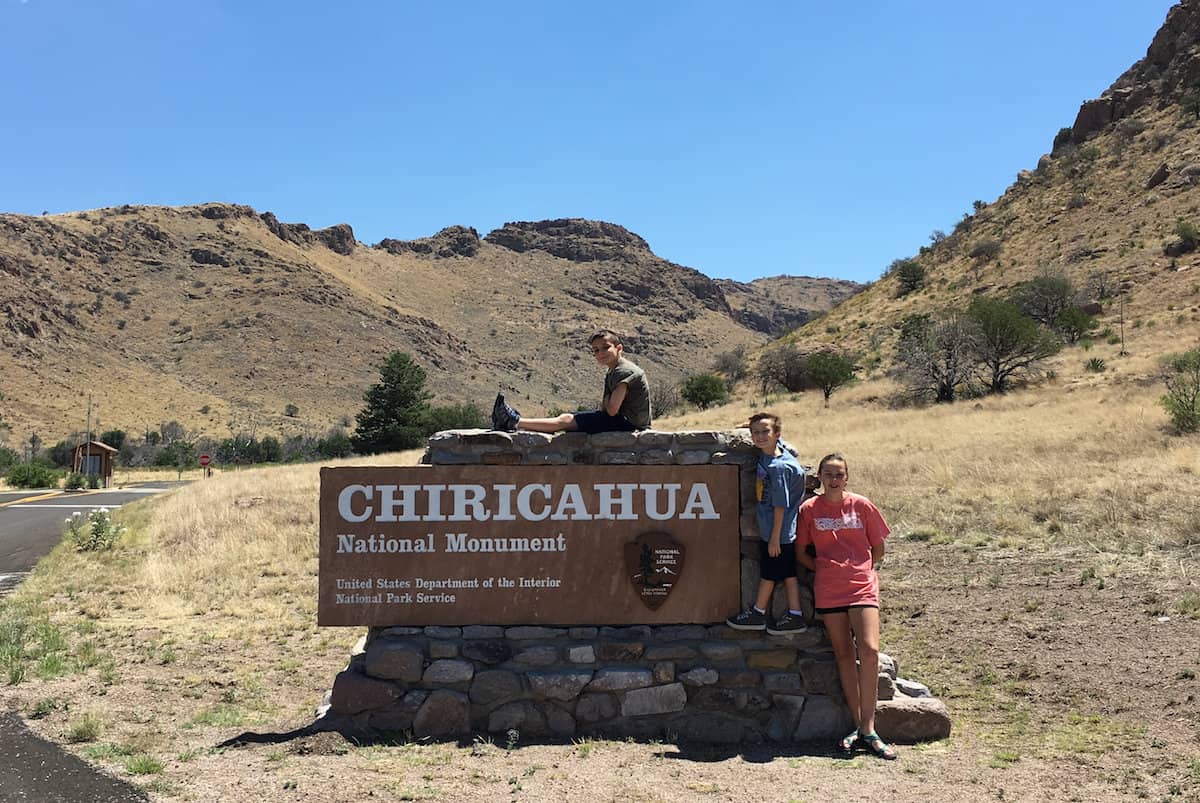
Chiricahua Visitor Center
One of the top things to do in Chiricahua National Monument is to visit the visitor center. The Chiricahua Visitor Center offers an interpretive area, maps, Junior Ranger booklets, a small bookstore along with a ranger-on-duty for questions. It also shows a short interpretive film introducing visitors to the area along with its history.
The visitor center was built in the 1930s by the Civilian Conservation Corps, a Great Depression-era work program for young men in the U.S. It also offers restrooms and water bottle fillers.
Located on the west side of the monument on East Bonita Canyon Road, it is open from 8:30 a.m. to 4:30 p.m.
Read More
Top Things to do in Saguaro National Park
What to see in Tucson Arizona
8 National Parks a Road Trip Away from LA
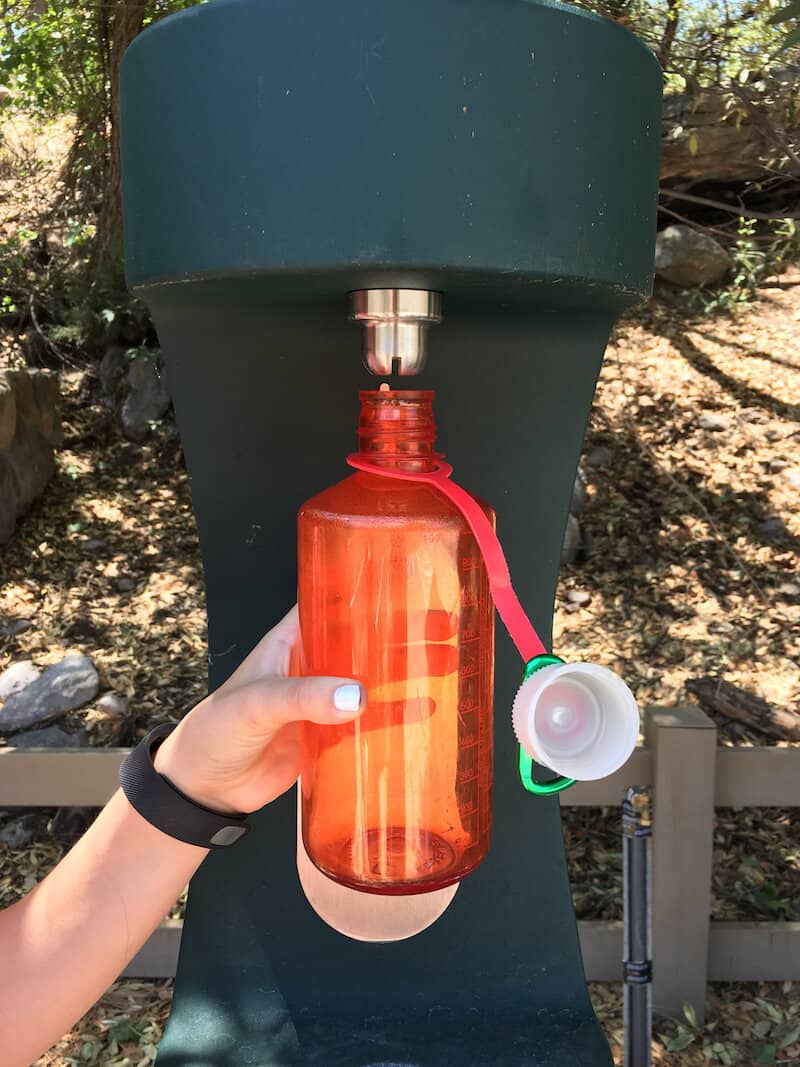
Scenic Drives in Chiricahua
One of the easiest way to enjoy the scenery of a national park is to drive through it. At Chiricahua National Monument, its scenic drive, Bonita Canyon Drive starts at the western edge of the park boundary.
The 8-mile route passes the Visitor Center, it climbs gently through a pine and oak forest to Massai Point, a viewpoint for Rhyolite Canyon. Bonita Canyon Drive is the main road in Chiricahua National Monument, use it to access Bonita Canyon Campground along with the majority of the trailheads.
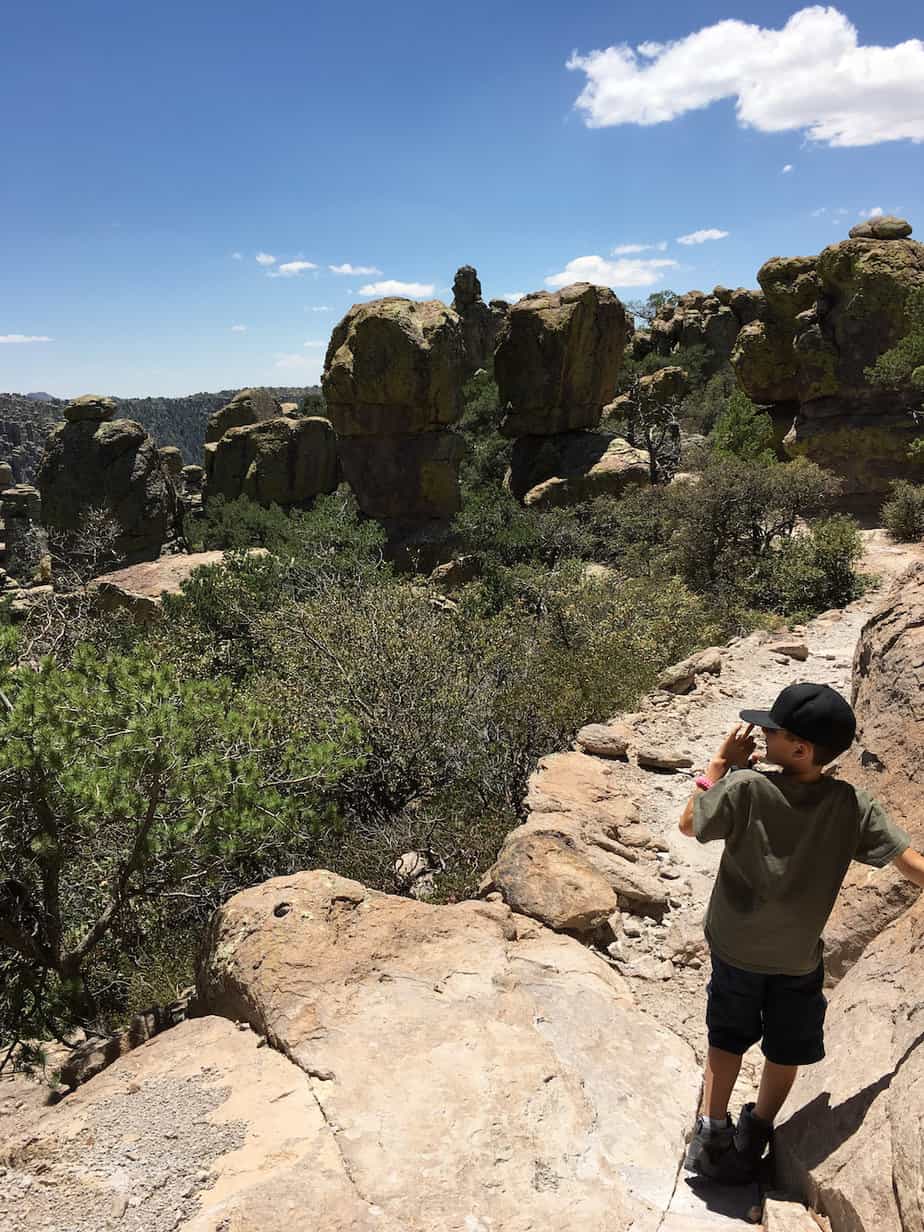
Best Hiking Trails in Chiricahua
Another great way to see Chiricahua National Monument is on a hike. It offers 17 miles of hiking trails.
Bonita Creek Loop—A .2-mile loop around the picnic area and pets permitted.
Bonita Creek Trail—A .5-mile that connects Silver Spur Meadow Trail with the Bonita Creek Loop. Pets permitted.
Massai Point Nature Trail—A .5-mile hiking trail with interpretive signs.
Echo Canyon Grottoes—A 1.0-mile round trip is a shorter version of the longer Echo Canyon Loop, a 3.3-mile trail.
Silver Spur Meadow Trail—Departing from near the Visitor Center, this 1.2-mile one-way trail passes the CCC-built fireplace, once used in a canvas mess hall tent. Continuing, it passes a CCC-built bear cage once used for a bear cub the men of the CCC raised for a bit. Then finally the trail passes the Stafford Cabin, near Faraway Ranch. Pets permitted.
Moderate hikes in the canyon include the Echo Canyon to the Visitor Center Hike that measures 4.2 miles. The Sugarloaf Mountain Trail is 1.8 miles one-way hike and climbs to the 7,310-foot mountain top.
Tour Faraway Ranch
On the western edge of Chiricahua National Monument, the Erickson family settled with three children in the late 1880s. The two daughters of the original Erickson family developed Faraway Ranch as a guest house in 1917. In addition to bringing tourism to the region, they named “Wonderland of Rocks”, a rock formation.
In 1924, the area became the Chiricahua National Monument and the Erickson family eventually sold Faraway Ranch to the National Park Service in the 1970s.
Faraway Ranch is undergoing a renovation, so tours are not available at this time.
Night Sky Viewing at Chiricahua
Since the Chiricahua Mountains are isolated from large urban areas, it boasts night skies that are nearly pristine. In fact, Chiricahua National Monument was designated an International Dark Sky Park in 2021.
Look for Dark Sky programming offered during the year or enjoy the skies on your own. The Faraway Ranch area offers unobstructed views. Consult the visitor center for night programming during your visit.
Read More
Planning Guide to the Grand Canyon’s South Rim
Top Things to do in Flagstaff Arizona
Top Things to do at Grand Canyon National Park’s South Rim
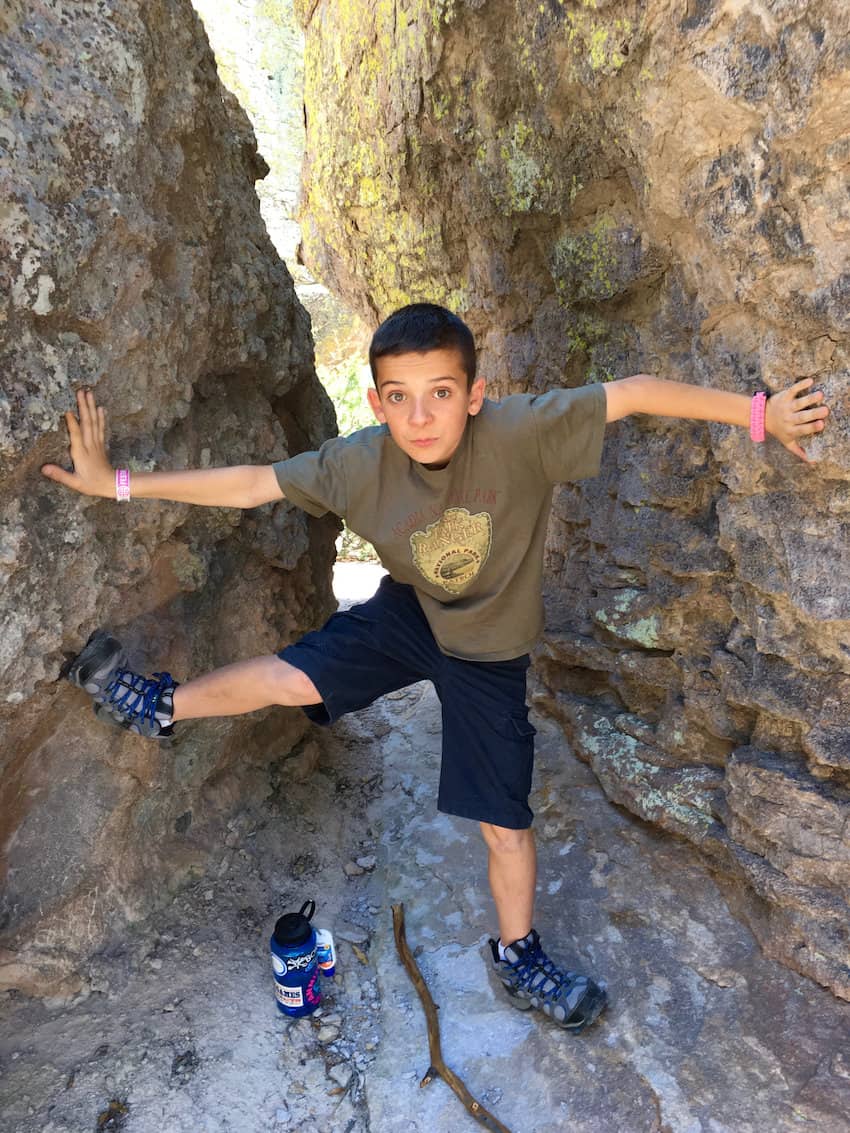
Kids at Chiricahua
The Junior Ranger Program is the go-to program for families to learn more about a National Park. It’s free and takes about two hours to complete. My kids love the badges that the Rangers present them after completing their booklet.
Pick up a booklet at any visitor center then complete the age-appropriate activities. Return for a souvenir badge and certificate.
Read More
Junior Ranger Badge Guide
Best Kids National Park Books
Junior Ranger Badges on Alaskan Cruises
Pets in Chiricahua
Chiricahua National Monument welcomes pets as long as they practice the principles of the BARK program.
BARK program
B–Bag waste and dispose of it in the trash
A–Always leash your dog for their safety and others
R–Respect wildlife
K–Know where you can go
Leashed dogs are welcome on the following trails.
- Silver Spur Trail
- Faraway Ranch
- Bonita Creek
- The connecting trail from Visitor Center and the campground.
Pets are allowed anywhere a vehicle can go, so turnouts and picnic areas are perfect for pets.
Biking in Chiricahua
Biking is permitted on the paved roads in Chiricahua National Monument, including e-bikes. It isn’t permitted on the hiking trails.
Horseback Riding in Chiricahua
Exploring a park site on horseback is a unique way to enjoy the area and Chiricahua is one of the NPS sites that allows stock animals inside of its boundaries. Many of the trails in Chiricahua National Monument are open to horse use, like Silver Spur Meadow Trail, Lower Rhyolite Canyon Trail and Bonita Creek Trail.
Designated parking for horse trailers is near Faraway Ranch. The nearest equestrian camping area, Coronado National Forest welcomes overnight camping with horses. For more information about visiting Chiricahua with horses, visit the NPS website.
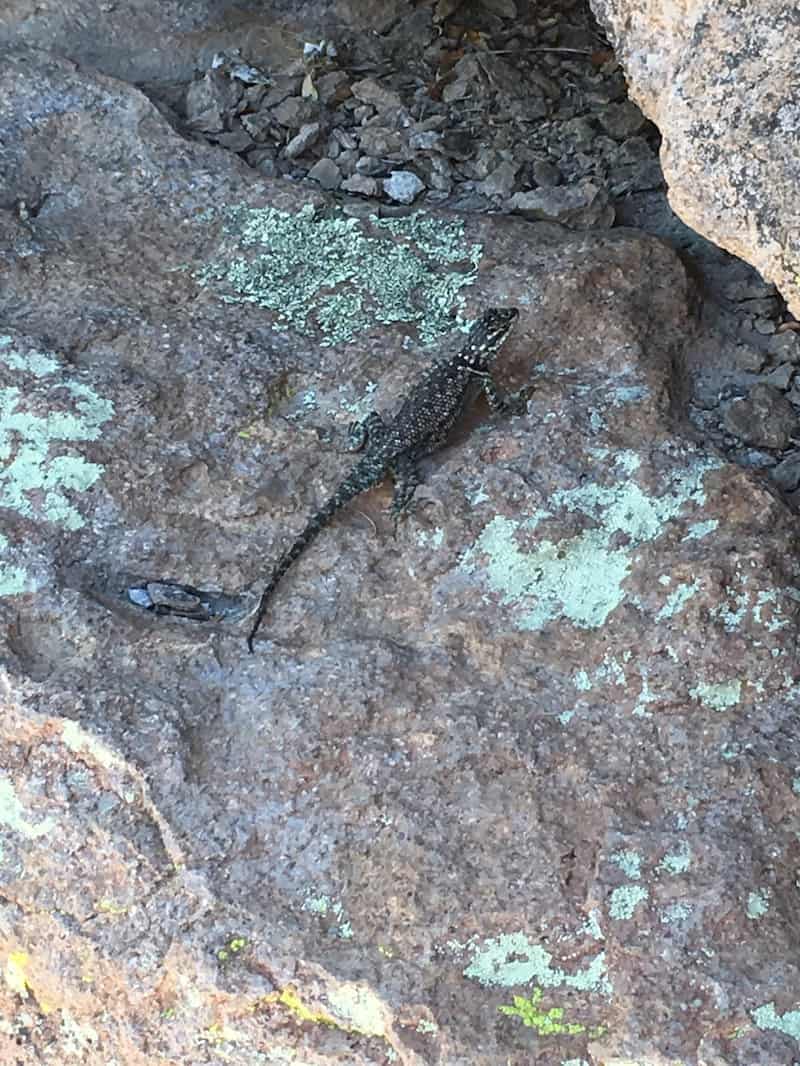
Wildlife of Chiricahua
For southern Arizona, Chiricahua offers an array of animals not typically seen in lower elevations surrounding the park. With cooler temperatures and tree coverage, the following animals can be spotted.
- Coatimundi
- Arizona White Tail Deer
- Chiricahua Fox Squirrel
- Javalina
- Black-Tailed Rattlesnake
- Mexican Jay
- Acorn Woodpecker
- Coral Snake (poisonous)
Birders come to Chiricahua to spot hard-to-find Mexican species since they are at their northern limit of their range.
Plants of Chiricahua
Rising up to 9,763 feet from the surrounding grassland area, over 1,200 different species of plants can be found in Chiricahua. It is known as a sky island, Chiricahua National Monument protects an area of higher elevation rock formations.
From the Parry agave to Schott’s yucca, the desert landscape transitions. At the higher elevations, trees dot the rock formations, and Arizona White Oak and Manzanita are found in the area along with pines and cypress.
If rains come in fall and winter, spring can be colorful with wildflowers, like the prickly poppy. For the higher elevations of Chiricahua, visitors can find more flowers later in the spring.
The History of Chiricahua
In 1924, Chiricahua National Monument was created to protect the unique pinnacles and balanced rocks in the Chiricahua Mountains. Known as a sky island, or isolated mountain area raising up from a lowland area, the Chiricahua Mountains are the largest sky island in Arizona.
The Chiricahua National Monument protects over 12,000 acres with 90% a designated wilderness. Named after the Chiricahua Apache, an eruption from nearby Turkey Creek Volcano created rhyolite some 27 million years ago and the rock formations are still be sculpted by the erosion.
The People of Chiricahua
With a shard of ancient pottery, archeologists can date humans in the area about 8,000 years ago. They were hunter-gather people who harvested grasses, berries and herbs from the area.
According to the National Park Service, the Chiricahua Apache lived in the area, and the Chokonen band of the Apache are most known with the area. A nomadic people, that clashed with others, especially the Spanish who arrived in the 1500s.
As mining and settlement moved further into their traditional lands, the Apache, led by Geronimo and Cochise, raided settlements in the area. As was the case throughout the Southwest, the newcomers outnumbered the Apache. The U.S. government dispatched the Buffalo Soldiers and the Apache surrendered in 1886. They were later forcibly moved to Florida.
The Erickson Family, Swedish immigrants, settled in the area and built the Faraway Ranch. The area would eventually become a guest ranch until it was sold to the NPS and restored.
During the Great Depression, President Roosevelt started the Civilian Conservation Corps to put young men to work. The CCC built up the national and state parks during the 1930s and a company arrived in Chiricahua at the time.
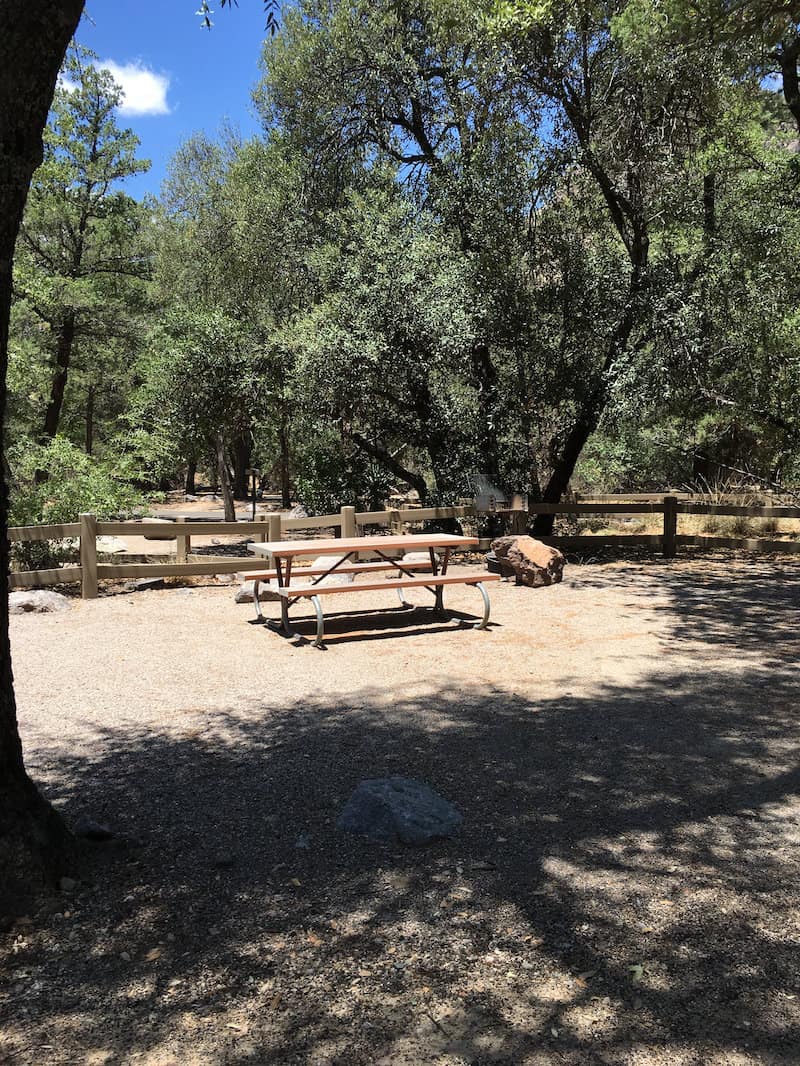
Picnicking in Chiricahua
Visitors can picnic during their stay at Chiricahua at several picnic area. Water is available at the Visitor Center and Faraway Ranch though food is not sold in the park
- Faraway Picnic Area
- Bonita Creek Picnic Area
- Sugarloaf Mountain Trail Area
- Echo Canyon
- Massai Point Trailhead Area
Camping in Chiricahua National Monument
Bonita Canyon Campground
- Year-round
- Reservations recommended
- 25 sites without hook-ups
- Potable water and flush toilets
- No Showers
- Vehicle length is 29 feet
The nightly camping fee is $20.
How to get to Chiricahua
Located about 120 miles east of Tucson, its address is 12856 E. Rhyolite Creek Rd. and drivers use Arizona Highway 186. Chiricahua National Monument is open 24 hours a day and 365 days a year and it is a free NPS site to enter. Vehicles exceeding 25 feet are prohibited beyond the Visitor Center due to windy roads. Though vehicles up to 29 feet can camp in the campground.
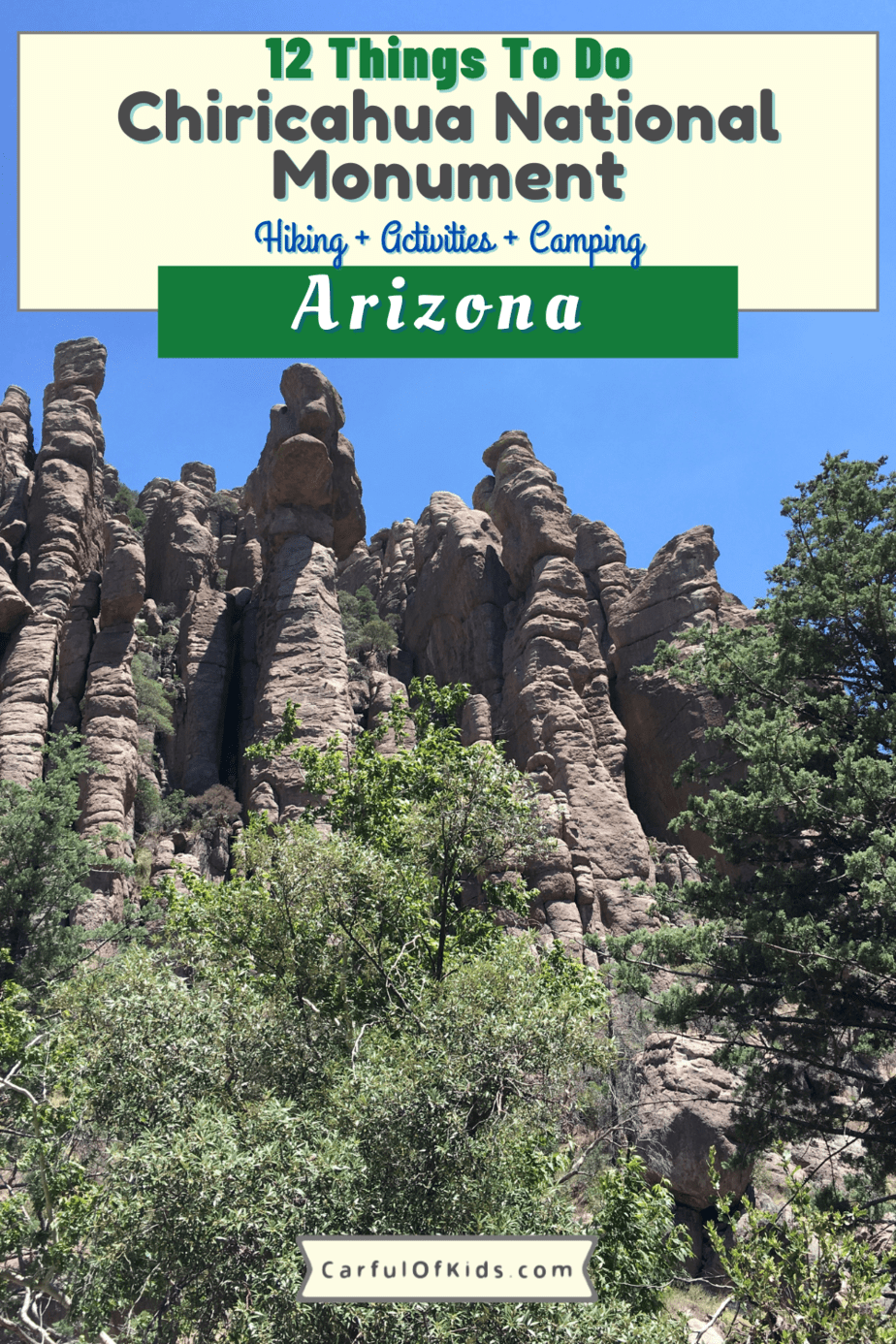

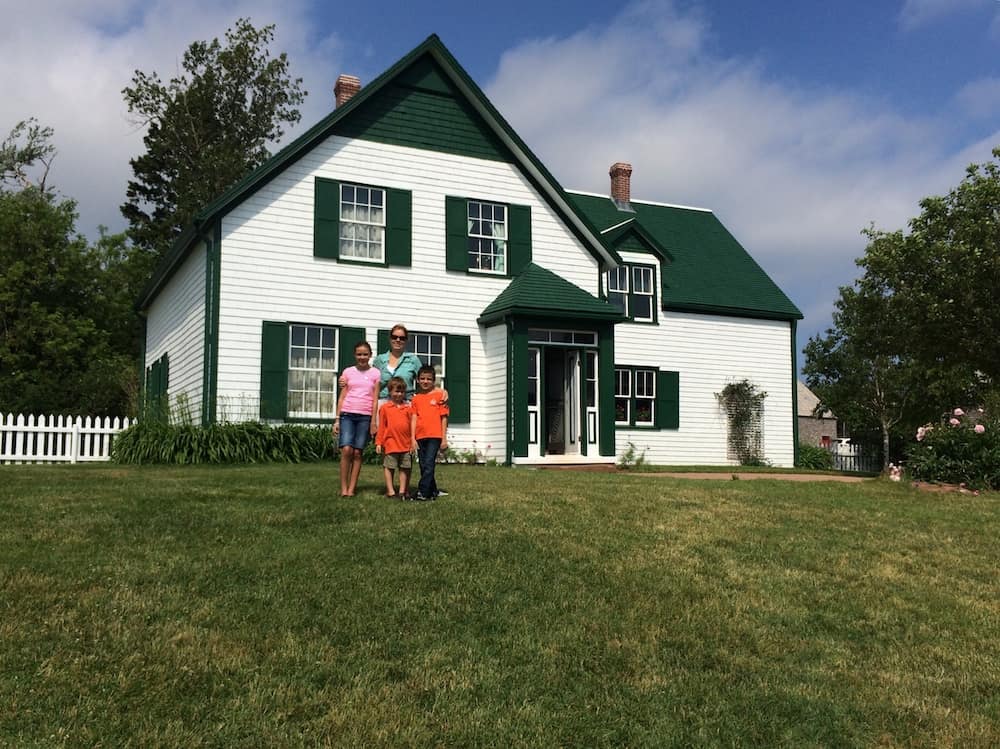
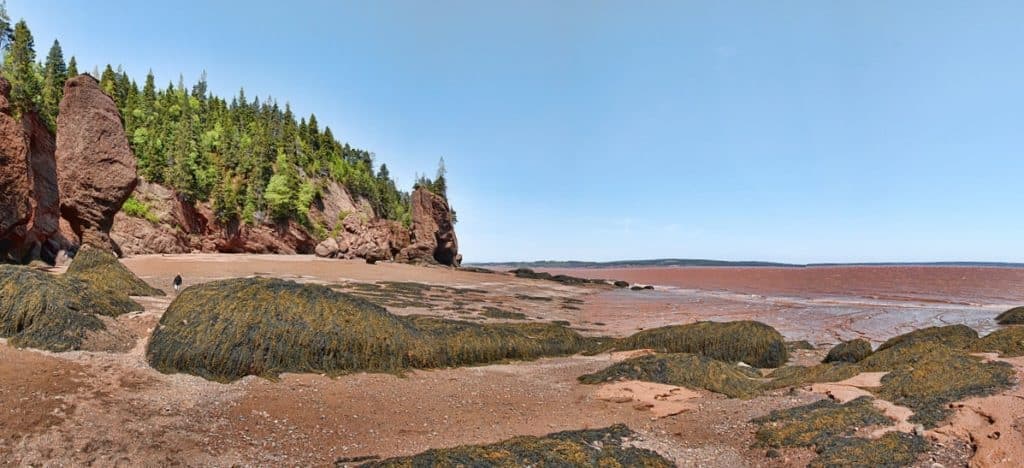
Comments are closed.